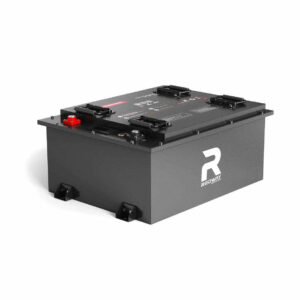What Should You Know About the 2009 Toyota Camry Hybrid Battery?
The 2009 Toyota Camry Hybrid battery is a nickel-metal hydride (NiMH) pack powering the vehicle’s electric motor. It typically lasts 8–12 years or 150,000–200,000 miles. Replacement costs range from $1,500 to $5,000, depending on whether you choose OEM, refurbished, or aftermarket options. Regular maintenance and avoiding extreme temperatures can extend its lifespan.
How Does the 2009 Toyota Camry Hybrid Battery Work?
The hybrid battery stores energy from regenerative braking and the gasoline engine, distributing it to the electric motor. Its 34-module NiMH design balances power output and longevity. The battery management system (BMS) monitors voltage, temperature, and charge cycles to prevent overcharging or depletion, ensuring seamless transitions between electric and gas modes.

What Is the Lifespan of a 2009 Camry Hybrid Battery?
Most 2009 Camry Hybrid batteries last 8–12 years under moderate driving conditions. Factors like frequent short trips, extreme temperatures, and aggressive acceleration accelerate degradation. Toyota’s original warranty covered the battery for 8 years/100,000 miles, but post-warranty failures are common due to aged electrochemical cells losing capacity below 40%.
What Are Signs of a Failing Hybrid Battery?
Key symptoms include reduced fuel economy, dashboard warnings (e.g., “Check Hybrid System”), inability to hold a charge, and engine stalling. Erratic power delivery during acceleration or frequent switching to gas mode also indicate cell imbalance. A professional diagnostic scan revealing voltage deviations above 15% confirms impending failure.
How Much Does a 2009 Camry Hybrid Battery Replacement Cost?
Replacement costs range from $1,500 for refurbished packs to $5,000+ for OEM batteries. Labor adds $300–$800, depending on dealership vs. independent shops. Aftermarket options like Green Bean offer lifetime warranties for $1,700–$2,500. Battery reconditioning ($800–$1,200) is a temporary fix but rarely restores full capacity.
Can You Replace Individual Hybrid Battery Cells?
Yes, but it’s labor-intensive and requires technical expertise. Each of the 34 modules must be tested individually to identify weak cells. Replacing single modules costs $100–$300 each but risks imbalance with older cells. DIY kits with balancers are available, but improper handling can damage the BMS or void warranties.
What Are the Risks of Aftermarket Hybrid Batteries?
Aftermarket batteries may lack rigorous testing, leading to premature failure or compatibility issues. Lower-cost options often use inferior cells with 20–30% less capacity. However, certified refurbished packs from companies like Dorman or AeroVironment include warranties and meet OEM specifications. Always verify ISO certifications and customer reviews before purchasing.
One often overlooked risk is voltage inconsistency across cells in aftermarket packs. While OEM batteries undergo precise calibration during manufacturing, some third-party suppliers skip this step to reduce costs. This can lead to accelerated wear on the hybrid system’s power control module. Additionally, using non-OEM batteries might void existing warranties on other hybrid components. For example, Toyota dealerships may refuse to cover transmission repairs if an uncertified battery caused voltage fluctuations.
| Battery Type | Average Cost | Warranty Coverage |
|---|---|---|
| OEM | $4,000–$5,200 | 3–5 years |
| Refurbished | $1,500–$2,800 | 1–3 years |
| Aftermarket | $1,200–$2,000 | 6–18 months |
How Does Temperature Affect Hybrid Battery Performance?
Extreme heat accelerates chemical degradation, while cold reduces ion mobility, cutting range by 15–20%. Toyota’s thermal management system mitigates this with cooling fans and heating elements. Park in shaded areas during summer and avoid sub-20°F temperatures to prevent capacity loss. Battery blankets or garage storage are recommended in colder climates.
Prolonged exposure to temperatures above 95°F can cause the battery’s internal resistance to increase by up to 40%, reducing its ability to deliver power efficiently. In contrast, temperatures below freezing slow down electrochemical reactions, which is why the gasoline engine may run more frequently in winter. Toyota addresses this with a dedicated battery warming circuit that activates below 14°F. Owners in extreme climates should consider installing auxiliary insulation kits or scheduling more frequent BMS software updates to optimize temperature compensation algorithms.
| Temperature Range | Effect on Battery | Mitigation Strategy |
|---|---|---|
| Below 14°F | 30% slower charge acceptance | Preheat battery via grid charger |
| 68–86°F | Optimal performance | None required |
| Above 104°F | Cell oxidation doubles | Park in shade, run cooling fan |
“The 2009 Camry Hybrid’s NiMH battery was a workhorse, but aging models now face cell corrosion and separator wear. We’re seeing a surge in aftermarket solutions, but OEM parts still offer the best longevity. Proactive maintenance, like cleaning battery vents every 30,000 miles, can delay replacements by 2–3 years.” — Hybrid Battery Specialist, AutoTech Innovations
Conclusion
The 2009 Toyota Camry Hybrid battery remains a critical yet aging component. While replacement costs are steep, understanding maintenance practices and market options ensures cost-effective solutions. Prioritize professional diagnostics for accurate assessments, and weigh warranty benefits when choosing between OEM and aftermarket batteries.
FAQ
- Does the 2009 Camry Hybrid Battery Require Special Maintenance?
- Yes. Clean cooling vents biannually, avoid full discharges, and drive the vehicle weekly to maintain cell balance.
- Can a Dead Hybrid Battery Damage the Car?
- Yes. A failed battery can overload the DC-DC converter or cause the gasoline engine to run excessively, reducing efficiency.
- Is the 2009 Camry Hybrid Battery Recyclable?
- Yes. Toyota’s recycling program recovers 95% of nickel and other metals. Contact dealerships or certified recyclers for disposal.
